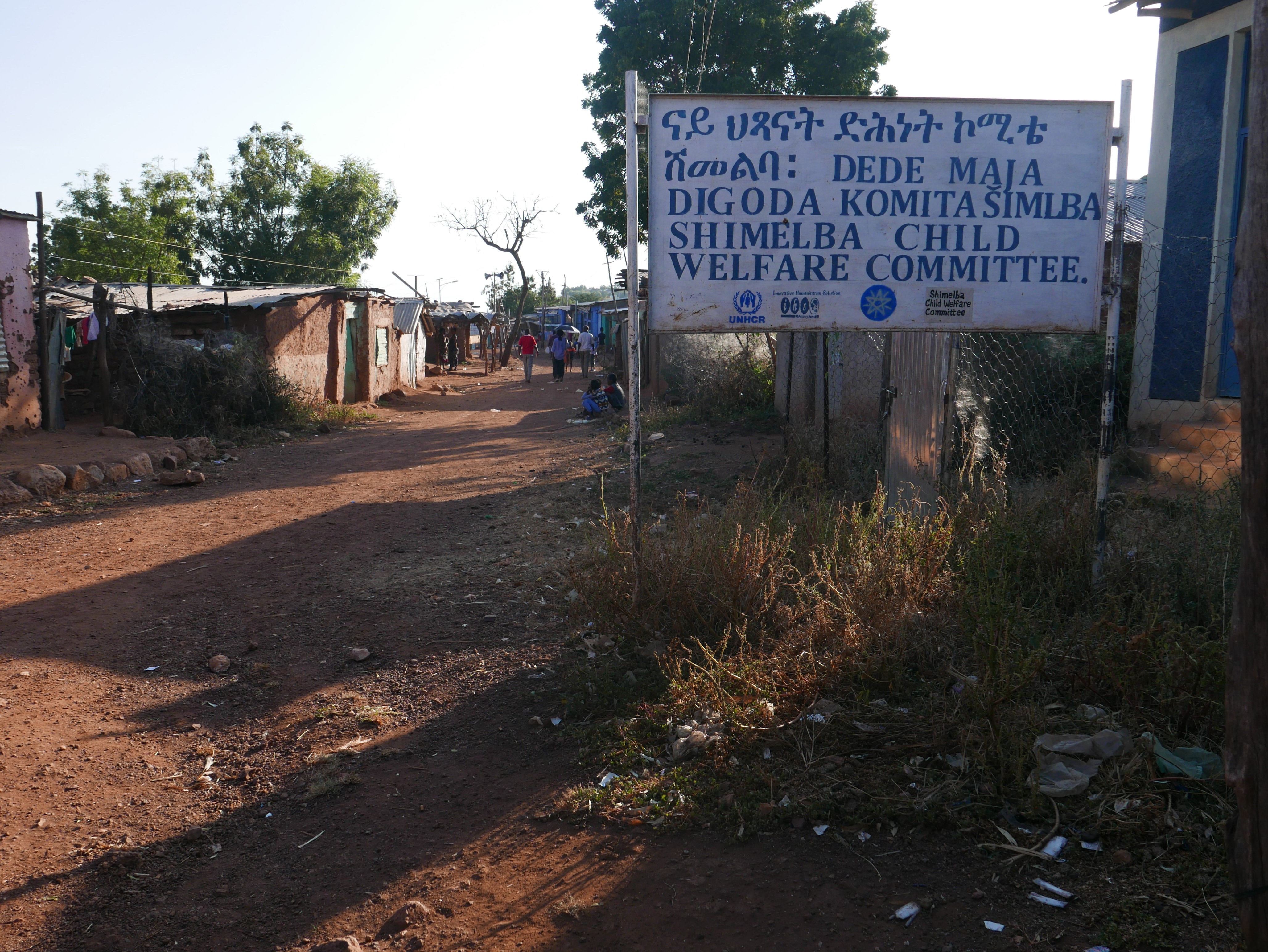TRAFIG Fieldwork has started in Ethiopia
By Fekadu Adugna Tufa and Markus Rudolf
The Ethiopian research team started fieldwork in October 2019 in Addis Ababa among Eritrean refugees who are beneficiaries of the Ethiopian government’s Out of Camp Policy (OCP). In Addis Ababa the team undertook fieldwork in three localities: Gofa Mebrathayil, Hayahulet and Bole-Harabssa inhabited by refugees who spent long time en route and who arrived recently. Since mid-November 2019 the team members conducted fieldwork around the Ethiopia-Eritrea border. The team visited three refugee camps, all of them populated by Eritrean refugees, however with some striking differences. Firstly, Shimelba – a camp established in 2004 - has a population of which 70% belongs to the Kunama, a minority ethnic group in Eritrea. Most of the Kunama have spent more than fifteen years in the camp. Secondly, Adiharush – a camp founded in 2010 - is a well-established camp hosting a mix of refugees who have been living in the camp between a couple of days and ten years. Thirdly, Hitsats - the youngest refugee camp established in 2014 - is mainly populated by young newcomers.
While the Shimelba camp inhabited by the Kunama, who are less mobile and less connected and who do not have a history of leaving their villages before the war, is considered to be stable (no/less secondary migration), the other two camps are populated by Tigrinya who are in contrast very mobile and well connected. This keeps the two camps dynamic, whereas the number of the refugee population is determined by the balance between new arrivals and secondary mobility. The short-lived opening of the border and general loosening of border control since the peace deal between Ethiopia and Eritrea in the Summer of 2018 has dramatically increased the number of new arrivals (at present between 250-300 per day). This is compounded by the difficult political situation in Sudan and Libya, which has discouraged secondary movements (including returns) and resulted in over-crowding of the camps.
Preliminary Findings:
Ethiopia has since 2010 officially started an Out of Camp Policy (OCP) especially for Eritrean refugees. The Comprehensive Refugee Response Framework (CRRF) and the 2019 Ethiopian government proclamation have reinforced the OCP with much more measures that significantly affect the refugees’ mobility, integration and livelihoods. Local experts and the regional Ethiopian refugee agencies unanimously welcomed the new policy but pointed out that the economic situation in Ethiopia would not permit to integrate the refugees without strong support from the international community. In regard to freedom of mobility and access to the labor market, the final legalisation is still being processed but was clearly higher than before the peace accord. The Ethiopian government shows a high amount of goodwill with regards to Eritrean refugees’ mobility and renting outside the camps. It has not restrained the movement of refugees from Eritrea since the peace accord.
In Tigray, the team also assessed the situation of Eritrean refugees in urban areas such as Shire and Mai Tsebri. The situation in Tigray is first and foremost determined by the proximity to the Eritrean border. The refugees coming from Eritrea - mostly Tigrinya - encounter a similar sociocultural setting and the same language on the other side of the border. On the one hand, this makes integration easier. Yet, on the other hand, it was in this area where the Ethiopian-Eritrean war was fought. This impacted on the relations between Tigrinya speakers from the different sides of the border negatively. However, so far, the Ethiopian government’s willingness supported by the socio-cultural similarity helped many refugees to live out of the camps in the nearby towns and access the informal job markets at least until they organise their onward mobilities – which makes the ‘waiting’ active.
 Photo: BICC\M. Rudolf
Photo: BICC\M. Rudolf
Using mixed methods (biographic interviews, focus group discussions, participant observation, and expert interviews in the mentioned locations) we encountered a rather mixed level of local integration, connectivity and mobility. The most decisive factor in regard to opportunities for secondary migration respectively onward mobility were the existence ofs remittances from family members abroad. The biggest challenges for local integration were reportedly the means to move and settle outside the camps and to find the necessary guarantees. Those refugees with relatives in Ethiopia do not stay any longer than the period of time necessary to legalise their status before moving on to larger urban centres where they either look for jobs or opportunities for resettlement abroad. On the other hand are refugees without the necessary means often forced to move back to the camps due to the inability to cover the expenses for housing, transport and daily necessities for a longer period of time.
In sum, those staying in the camps for a longer period of time were on average more vulnerable and having less support from their family networks than those that had moved out, either to the direct surroundings of the camp or to urban centres further away.
The views and opinions expressed in this blog do not necessarily reflect the opinion of the TRAFIG Consortium or the European Commission (EC). TRAFIG is not responsible for any use that may be made of the information contained therein.